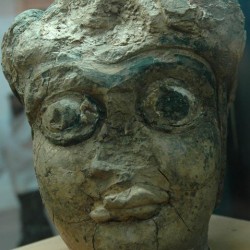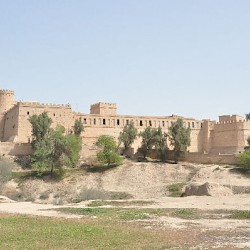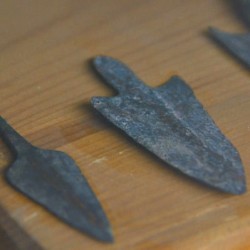Susa, Archaeological Museum
Not far from the excavation of ancient Susa, you will find the small but charming museum, where you will find not only many objects from Susa itself, but also from towns in the neighborhood, the province of Khuzestan. There are six main rooms, where you will find architectural remains from the palace of Darius, ceramics, weapons, sculpture from Masjid-e Solaiman and funerary masks from Haft Tepe. Some finds are from Iran’s central plateau.
When Susa was excavated in the late nineteenth century, the archaeologists and the government of Iran – which was still called Persia back then – agreed that all gold and silver would remain in Asia, while finds of stone and other less precious materials could be brought to France. This is why the most famous objects from Susa are now in the Louvre. Other objects, like the splendid Egyptian-style statue of Darius that was excavated in the 1970s, were brought to the Archaeological Museum of Tehran. The copies of the glazed reliefs in the Museum of Susa are helpful, but are also a sad reminder of what is missing.
Still, there is much to be seen that is really interesting. I have been there now four times and usually take my groups up the hill as early as possible (Khuzestan is one of the hottest regions in the world), and take them to the museum later. We can drink coffee in the lovely garden, sitting near the fountain, and imagine we are in paradise.
The museum is one of the few places in Khuzestan where you can buy postcards.
This museum was visited in a/o 2004, 2009.


























